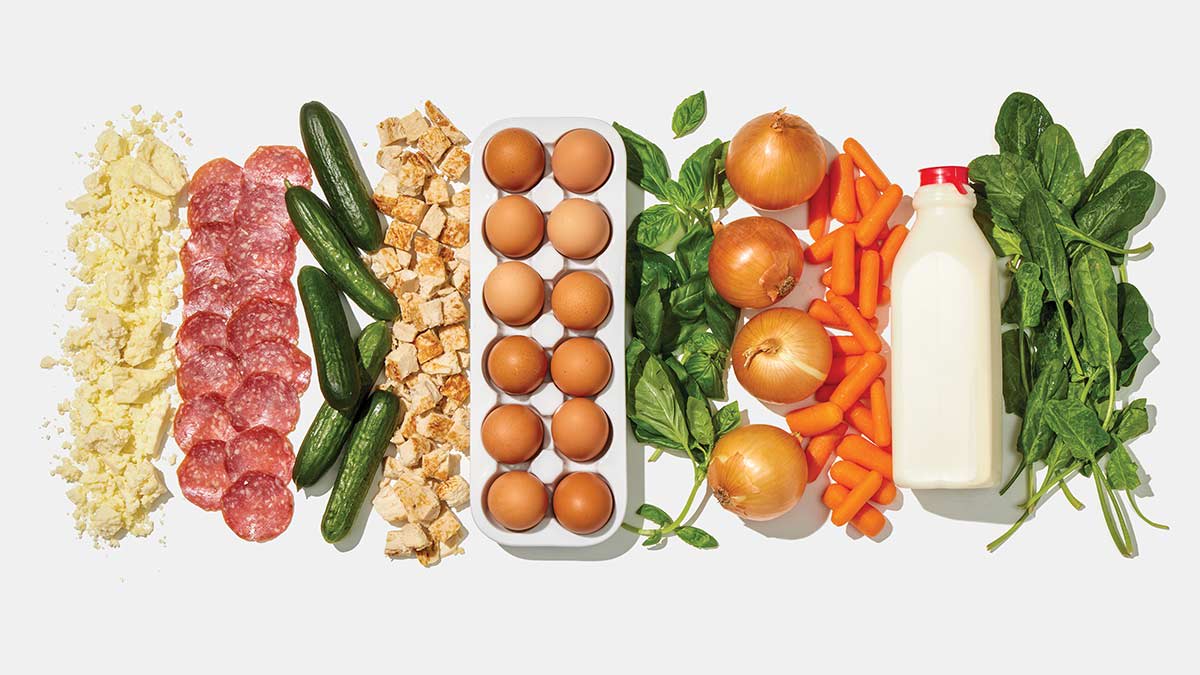10 Really Risky Foods Right Now

“Following a few simple food prep precautions at home can dramatically reduce your risk of foodborne illness,” says James E. Rogers, PhD, director and head of product and food safety testing at CR. That’s important because in your kitchen, bad bacteria can easily spread from surface to surface, and from your hands to anything you touch. What’s more, certain bacteria, like listeria, can continue to survive in warm or cold environments, even the freezer. There are also a few easy but effective strategies to use when grocery shopping or eating away from home. Safety experts recommend you take the following steps:
Cook food to a safe temperature. Cook poultry and reheat leftovers to at least 165° F; ground meat and sausage to at least 160° F; and steaks, roasts, and chops of any kind to at least 145° F. Never guess: Use a meat thermometer to check. At restaurants avoid ordering burgers and steaks rare or medium rare.
Double up on cutting boards and knives. This reduces the risk of spreading bacteria from raw meat or poultry to vegetables or other foods. For meat, consider a silicone board rather than wood, which has grooves where bacteria may hide even after cleaning.
Sanitize countertops. After food prep, clean the counter with warm, soapy water and wipe with a paper towel or a kitchen cloth that you can launder before using again. Then sanitize using a solution of 1 tablespoon bleach to 1 gallon of water or with a commercial kitchen sanitizer. Pour or spray the bleach solution on surfaces and wipe dry with a paper towel or a clean kitchen cloth. If using a commercial kitchen sanitizer, follow label directions.
Practice sink safety. Do not rinse raw meat. It’s unnecessary and can spread dangerous bacteria to your sink and to other foods. Use a paper towel to turn the faucet on and off. Wash your hands after handling any raw meats or fish. Clean the sink daily using the same method recommended for your countertops.
Reduce refrigerator risks. Keep meat and poultry on the bottom shelf, where it’s coldest. (Check out more food storage safety tips.) Store them in the original packaging and on a plate or in a bowl to catch any drippings. Clean up spills immediately, and thoroughly clean shelves, drawers, and walls at least once a month. Use hot water and a mild liquid dishwashing detergent. Rinse. Then disinfect with a solution of 1 tablespoon bleach to 1 gallon water. Dry with a clean cloth or paper towel.
Put food away promptly. Perishable foods—like cheese, salads, cut veggies or fruit, or cooked meat—should not sit out unrefrigerated for longer than 2 hours (1 hour if it is hot outside). That goes for foods you might put out for a party or a picnic, or foods you have left over after eating a meal.
Buy whole fruits and vegetables. Precut packaged produce is processed in commercial kitchens, where cross-contamination may be common. Check fresh produce for bruises or cuts—that’s how bacteria can get in.
Shop refrigerated and frozen foods last. To protect your hands and other foods from potentially harmful bacteria, use an inside-out produce bag to pick up packages of raw meat, poultry, and fish, then turn it right side out around the item. Pack raw meat in a separate shopping bag from other foods. If you use cloth bags, be sure to wash them often and in hot water.
Source link







